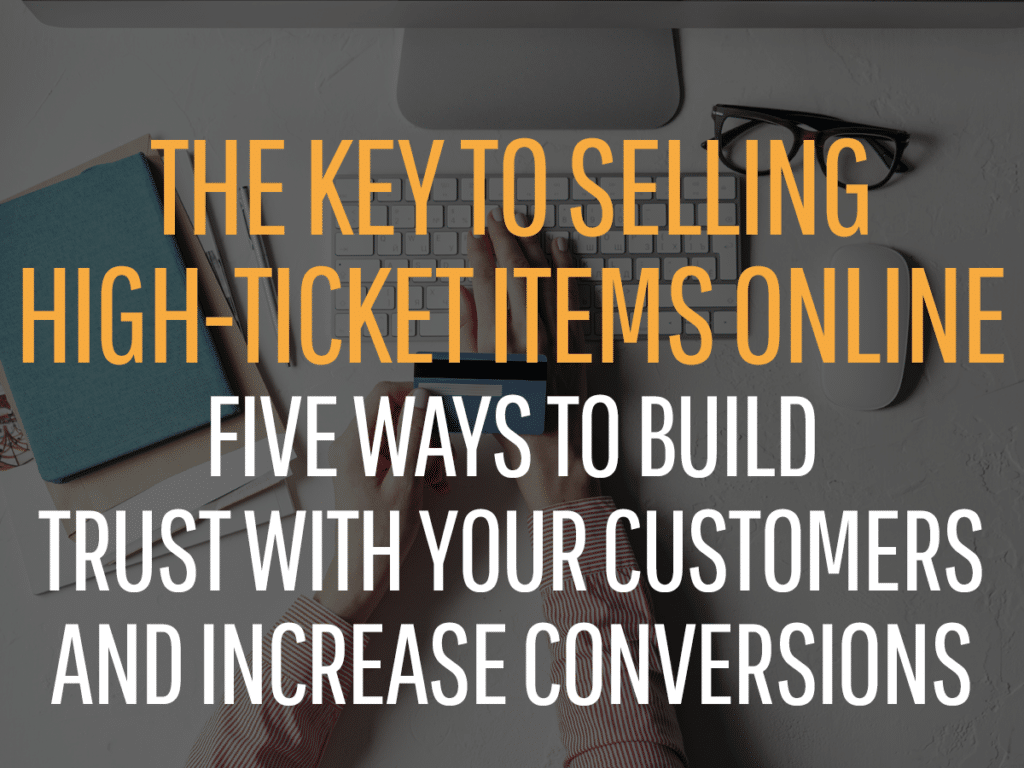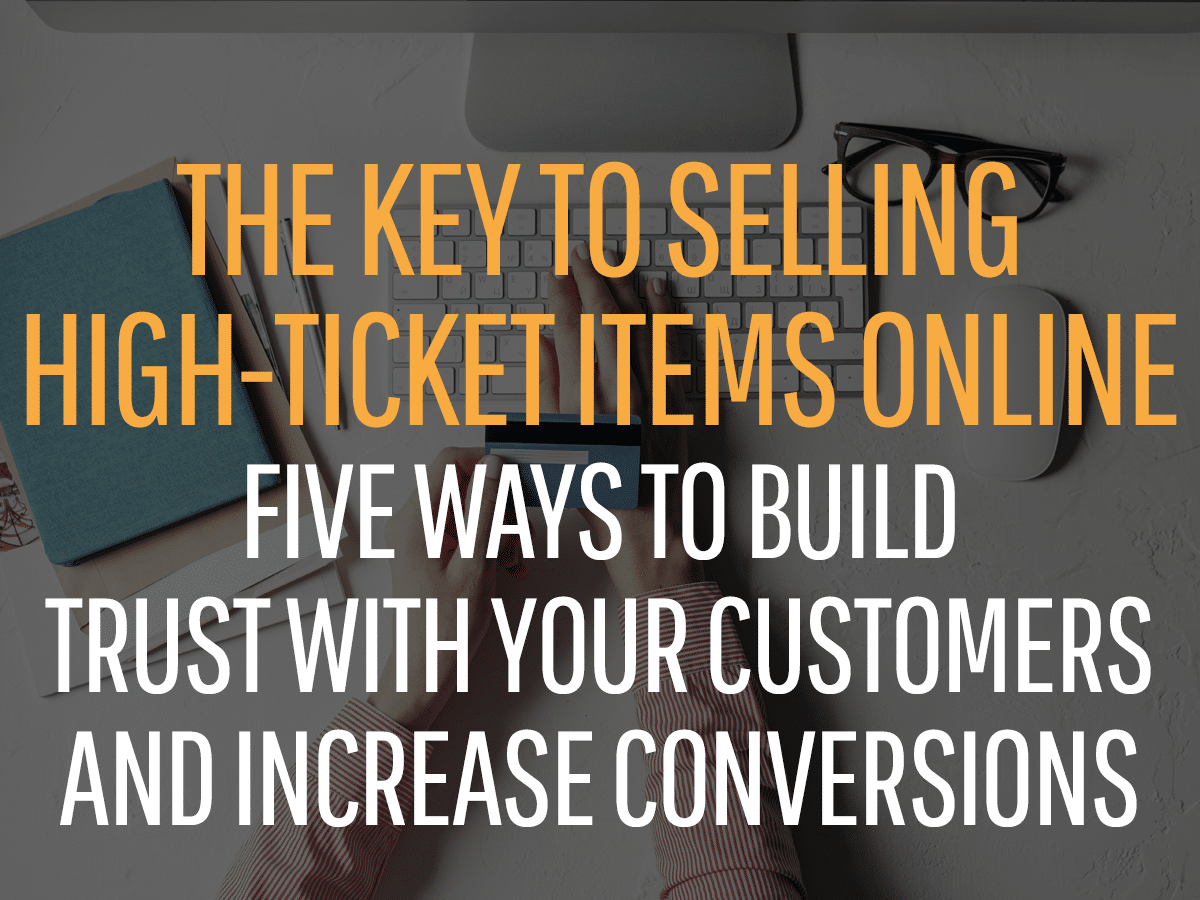5 ways to build trust with your customers and increase conversion
The COVID-19 pandemic forced many businesses to move from selling in-person to selling online. Salespeople who depended on face-to-face interactions to build trust and rapport with their customers need to find alternative ways to nurture relationships with their prospects.
Thankfully, it’s easy to reach virtually any audience via various digital marketing channels. Most people are comfortable with interacting with others online, so it’s possible to build trust even in industries where, traditionally, in-person selling was the key to driving conversion.
For example, I have been doing investor recruitment for commercial real estate offerings for over five years. With these high-consideration ‘purchases’, building trust online with customers poses a big challenge. To foster relationships with accredited investors and effectively progress them down the pipeline in the digital world, I needed to replicate offline relationships through online channels.
The tactics that I used are highly effective for any business that offers high-dollar/high-consideration products or services and needs to shift gears to make their online selling strategies more effective.
5 Digital Tactics to Build Trust Online With Your Customers
Here are the strategies I used to build trust online with high net-worth investors and how you can use them to nurture relationships with prospects and accelerate your sales cycle:
1. Share Your Expertise Generously
One of the best ways to reach a larger audience, establish your expert status, and build credibility is to share valuable and relevant content regularly. I like to give away a lot of expertise and information for free, mostly as long-form content (e.g., 1,000- to 1,500-word articles).
Consider your content as a gift of knowledge—share in-depth information and don’t use it as a promotional vehicle to sell your products or services. When you give away 75% of what you know, you position yourself as a trusted expert, and people will come to you for the remaining 25% of your secret sauce.
Writer’s block? Think about what your customers ask you all the time—these are great starting points for topic ideas. Consider your readers’ challenges and how your expertise can help them solve their problems. Besides how-to articles, you can also publish seasonal or local content, updates on industry news, expert interviews, and more to keep things fresh.
2. Establish Two-Way Communication
Thanks to today’s technology, online marketing is no longer a one-way street. When you focus on establishing two-way conversations with your audience, you can accelerate the “like, know, and trust” factor to build rapport and stay top of mind.
Hosting live webinars is my favorite way to communicate with prospects and clients. These real-time interactions help your audience “put a face to the name” while allowing you to address their concerns, questions, and objections so you can progress them down the sales funnel.
Use the comments, Q&A, and chat functions to gauge the interest of the audience and find out what they want to hear from you. Be flexible and adapt your content as needed to ensure that you’re delivering what your prospects and customers want. You can also leverage these interactions as market research opportunities to find out your target market’s preferences and priorities.
3. Let Your Personality Shine
Online marketing can feel impersonal at times, and it’s important to humanize your customer interactions. In most cases, it’s best to write conversationally as if you’re talking to the audience one-on-one. This helps deliver a consistent experience, which enhances trust when prospects eventually speak with you on the phone or in-person.
Add a personal touch to these communications whenever possible. You can also make customer interactions more relatable by establishing a strong personal brand, sharing your points of view, and injecting a sense of humor when appropriate.
If you have a team of salespeople, make sure that customers are always communicating with the same person no matter where they are along the sales funnel. After all, nobody wants to be a nameless piece of data being kicked around in your CRM system!
4. Practice Radical Transparency
This is not news—honesty is the key to building trust.
In my line of work, potential investors naturally want to know everything about an opportunity. After all, when you’re buying a high-ticket product or service, a lot is at stake. I find it the best strategy to share all the data I have available—whether the performance is good or bad.
When you’re completely honest and transparent, you nurture customers’ trust in the organization. When you share everything you know about your products or services, you put yourself on your customers’ side and position yourself as a trusted ally.
5. Leverage Social Proof
Did you know that 88% of consumers trust customer reviews as much as personal recommendations? Meanwhile, the average person reads ten online reviews before making a purchase decision.
Social proof, such as customer testimonials, social media mentions, and comments on third-party, sites can help you build credibility and show your prospects that “people just like them” are getting positive outcomes from your products and services.
Even if the comment is a suggestion on how you can do things better, it shows your audience that others are willing to spend the time to give you their honest opinions—which says a lot about your brand’s relationships with your customers.
Final Thoughts
Building trust with your prospects and customers through digital channels is more important than ever in today’s business environment. The strategies that I shared here will allow you to nurture relationships at scale so you can effectively accelerate your pipeline.
Last but not least, building trust via digital channels requires long-term and consistent efforts, so make sure you connect with your audience regularly to stay relevant and top of mind.
Sources





